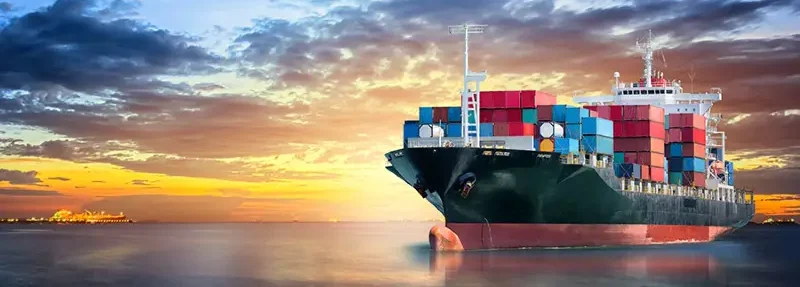Is there gold at the end of the Myanmar rainbow? — Exporter Magazine

An initial assessment by the Asian Development Bank (ADB) helps cut through much of the hype surrounding the emergence of Myanmar from the brink of self destruction. Since 1962 its pathway to socialism has effectively driven the economy to a virtual standstill. The vast mineral and petrochemical wealth has maintained the military elité so many people weren’t bothered by tax – they were simply left to sustain themselves, as one harsh critic noted.
The rights and wrongs of the past will consume scholars for the next decade – indeed much is written on Myanmar’s resurgence every day in both a positive and negative light.
So what are the real opportunities in the here and now?
As with any market entry discussion it is important to strip away all emotion and look at the realities. It is well documented that the basic needs of the Myanmar people offer significant opportunities in themselves – i.e. water, sanitation, energy and healthcare. Concurrent with these fundamentals are food and shelter – arguably more difficult to address as the ‘returns’ are not easy to measure in the short term.
Of course, the underlying need for agricultural expertise is far reaching and is certainly not dependent on government funding. This sector offers a lifeline to much of the population to develop sustainability as well as become a major global exporter.
From a business perspective, transport and communication are the country’s life blood. Throw in office space, industrial estates and hotels and you have the macro here and now opportunities.
Naturally, people to do the work will then become the limiting factor so while education appears last on our list, given the timeframe to train people can be generational it is actually one of the first!
For many years, 25 percent of the country’s budget went to the military, while just 1.3 percent was allocated to education. In the mid 1960s, a former leader banned the teaching of English at lower school levels. This followed on from earlier action which saw the military blow up Yangoon University – then regarded as a hotbed of dissent.
In 1988 the failed pro-democracy uprising by Aung San Suu Chi resulted in the regime shutting down other universities and dispersing students to the countryside in a divide-and-rule strategy that endured for the next 20 years. As a result, there is widespread disillusionment about the value of education and some suspicion surrounding the government’s sudden ramping up of its investment in this critical area.
Just where education sits in the 12 macro areas highlighted above depends on the need for local labour, as language and technical skills are minimal. However, these macro areas provide a framework for new entrants to carve out their own niche.
From a distance
There are already significant multinational players setting up shop in Myanmar– many basing themselves in Thailand and servicing the country from a distance. The frequent brown-outs (low voltage power interruptions) and hit-and-miss communications, not to mention lack of hotel and rental housing, leave many no option.
SMEs in particular have huge potential to support these companies who have the resources and balance-sheet required to sustain the long term investment. General Electric is one of the first US multinationals to conclude an agreement – signing a medical supplies agreement with two of Myanmar’s hospitals. PTT, Thailand’s biggest oil and gas conglomerate is about to set up a subsidiary as part of a US$2 billion investment that will take them through to 2016. The investment is far reaching, covering upstream exploration as well as downstream refining, gas separation right through to pumping fuel and gas at service stations. PTT’s commitment is in part driven by its strong foothold in Thailand, which currently imports almost 30 percent of its natural gas from Myanmar.
The impending ASEAN Economic Community (AEC) slated for a 2015 launch is a significant external factor which will drive much of the investment in Myanmar. This is self serving to a degree, as Myanmar will be positioned as another lower cost production base in the region.
In addition, its geographical position between India and China is somewhat unique – a meeting place of the two superpowers. The flow of trade between these two nations is likely to increase to massive proportions and Myanmar is the conduit. In any supply chain the focus is always on the bottle neck and both these nations have much to gain by helping Myanmar open up its transportation capacity.
Risk factor
However, as with all such opportunities there is risk and in Myanmar this is almost entirely in the hands of the Government of the day. The ‘who, what, when, where, how’ of actually making money and repatriating profits are the questions that should consume new entrants.
Much has improved in recent times to ease the flow of money. In October 2011 Myanmar’s central bank opened up licensed exchange rate centres to facilitate an easier exchange of the Kyat which was previously only allowed through government banks. This had spawned a huge black market system where the former official rate was six Kyats to the USD and trading elsewhere took place at 800 Kyat to the USD! Then in April 2012 a new foreign exchange structure was agreed with the International Monetary Fund to reform the dual rate system to a managed floating exchange system. Earlier in July the Kyat was trading at around 880 to the USD.
The absence of a robust legal and regulatory framework is the most tangible risk. Many laws date back to the country’s colonial past and with no independent judiciary, the important part of any market entry, how to withdraw if it all goes horribly wrong is an unknown. The president has frequently gone on record insisting new investment laws will include guarantees of investor protection, and planned reforms for both privatization and minimum wages indicate a strong commitment to foreign investment. Infrastructure investment will require a massive diversion of funds from the military leader’s pet projects of the past to those aligned to the future of the nation. Clearly it is their best interests to develop a framework which enables external investment to flow into the country.
There is no doubt there is a vast pot of gold at the end of the Myanmar rainbow, but it is buried very deep and will take significant time, effort, patience and resources to dig up your share.
Greg Reynolds is a director of YourBUSINESSinASIA.com, an Asian market entry and business development consultancy based in Bangkok and covering the wider ASEAN region. Email greg@yourbusinessinasia.com
Publishing Information
Magazine Issue
Exporter Magazine Sept/Oct 2012 Issue 25





